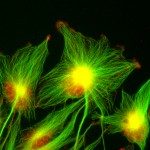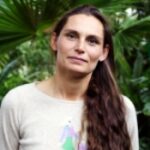Link to Pubmed [PMID] – 30059630
Annu. Rev. Cell Dev. Biol. 2018 Oct;34:1-28
Intermediate filaments (IFs) are one of the three major elements of the cytoskeleton. Their stability, intrinsic mechanical properties, and cell type-specific expression patterns distinguish them from actin and microtubules. By providing mechanical support, IFs protect cells from external forces and participate in cell adhesion and tissue integrity. IFs form an extensive and elaborate network that connects the cell cortex to intracellular organelles. They act as a molecular scaffold that controls intracellular organization. However, IFs have been revealed as much more than just rigid structures. Their dynamics is regulated by multiple signaling cascades and appears to contribute to signaling events in response to cell stress and to dynamic cellular functions such as mitosis, apoptosis, and migration.

